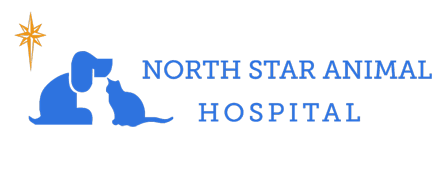Library
-
Sudden acquired retinal degeneration syndrome (SARDS) causes blindness in older dogs, most often females. The underlying cause of SARDS is unknown and there is no effective treatment for the condition. This handout explains the clinical signs observed in affected dogs, how the condition is diagnosed, and how to support a dog with SARDS.
-
Sugar gliders have become popular pets over the last decade. There are several well-known diseases or conditions that owners of sugar gliders should be aware of. Tooth decay from tartar build-up can lead to tooth root abscesses. Improper diets can lead to low blood calcium, obesity, and tooth decay. Intestinal problems may be caused by an improper diet, a bacterial infection, or a flagellated protozoal infection. It is essential to consult a veterinarian familiar with sugar gliders to select a proper diet and keep your sugar glider healthy.
-
Syncope (or fainting) is defined as a temporary loss of consciousness that occurs when the brain does not receive enough oxygen. Most dogs who experience syncope spontaneously recover once appropriate levels of oxygen reach the brain.
-
This handout explains syringomyelia and Chiari-like malformation in dogs, in which fluid-filled cavities in the spinal cord develop, leading to an abnormal sensation in affected dogs. The clinical signs of the condition, along with diagnosis, treatment, and prognosis, are described.
-
Systemic hypertension describes high blood pressure throughout the entire body. Hypertension in cats is often due to an underlying disease. When there is no underlying disease. The treatment of cats with hypertension depends on the underlying cause. Your veterinarian will recommend the best treatment options for your cat based on her specific needs. Prognosis is variable depending on how well the underlying conditions are controlled.
-
Systemic hypertension describes high blood pressure throughout the entire body. Hypertension in dogs is often due to an underlying disease (secondary hypertension). When there is no underlying disease, it is called primary hypertension. There are several signs of hypertension including sudden blindness, bleeding inside the globe of the eye, persistently dilated pupils, head tilt, seizures, disorientation, ataxia, circling, weakness or partial paralysis, nystagmus, increased drinking and urinating with the progression of chronic kidney disease, hematuria, and epistaxis. The treatment of dogs with hypertension depends upon the underlying cause. Medications commonly used to manage hypertension in dogs include angiotensin converting enzyme (ACE) inhibitors, angiotensin II receptor antagonists (ARBs), beta blockers, diuretics, and calcium channel blockers. The course of hypertension in dogs depends on the underlying cause.
-
Systemic lupus erythematosus (SLE) is an immune-mediated disease in which a dog's immune system begins to attack her own tissues.
-
Systemic lupus is a rare disease in cats and most commonly affects Siamese, Persians, and Himalayans. It is caused by immune system dysregulation resulting in the immune system attacking different cells in the body. Skin changes can include ulceration or erosions of the face, ears, or entire body. Other systems affected include the kidneys, joints, blood cells, and the central nervous system. Diagnosis is difficult, requiring the presence of a minimum of three of the 11 criteria set by the American College of Rheumatology. Treatment involves suppressing the immune system with steroids and other immunosuppressive medications. Prognosis is guarded, as treatment to control the symptoms will be needed lifelong and in some cases may not be effective.
-
Taurine is a type of amino acid. Amino acids are the building blocks of all proteins. Taurine is an essential amino acid for cats. Taurine deficiency leads to feline taurine retinopathy, a weakening of the muscle cells in the heart (dilated cardiomyopathy) and may cause digestive disturbances. Since the 1980s, all cat diets are supplemented with enough taurine to meet the normal cat's needs. A healthy cat that eats a high-quality cat food that is appropriate to its life stage does not require supplementation. Supplemental taurine is used as a treatment for dilated cardiomyopathy in cats.
-
Nebulization and coupage are used in patients with a variety of lung conditions and can be performed by veterinary staff and pet owners. Nebulization may be used to deliver a variety of medications to the lungs, in cases of infection, allergic lung disease, or other lung conditions. Coupage is often recommended for patients with pneumonia or bronchitis.

